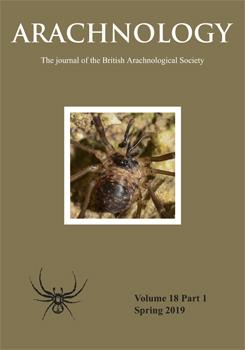Most harvestmen emit secretions from scent glands as a secondary defence mechanism. Prior studies of Phareicranaus calcariferus described the general morphology of the ozopore, noted jet emission as the mechanism for the release of secretions, but did not investigate intraspecific variation in emissions or the morphology of the ozopore. In this study, we compared the modes of emission by adult females and alpha males and found that when seized by forceps, approximately 50% of adults emitted enteric fluids (colourless, odourless), globules of secretions near the ozopores, or jets of fluid that were directed upwards and backwards or laterally. Individuals that used jet emissions usually released secretions from one scent gland and in a single burst. We observed considerable intersexual variation with respect to the type of emissions. Females emitted jets 32% of the time (n = 28), whereas males produced jets in only 4% of our observations (1 out of 26). Males more frequently produced enteric fluid (31%) in comparison to females (14%). Our SEM-based investigation of ozopore morphology did not reveal intersexual differences in microanatomy. However, we observed intraspecific variation in the morphology of the dorsal openings and dorsal channels of the ozopores.
How to translate text using browser tools
23 April 2019
Sexual Variation in Jet Emissions from Scent Glands in a Neotropical Harvestmen (Opiliones: Cranaidae) from Trinidad, W.I.
Michael K. Moore,
Victor R. Townsend Jr.
ACCESS THE FULL ARTICLE

Arachnology
Vol. 18 • No. 1
March 2019
Vol. 18 • No. 1
March 2019
defence
enteric fluid
ozopore
Phareicranaus calcariferus
secretions




